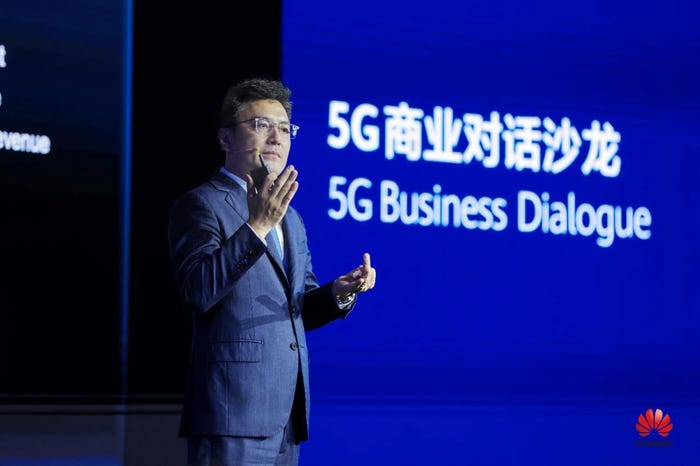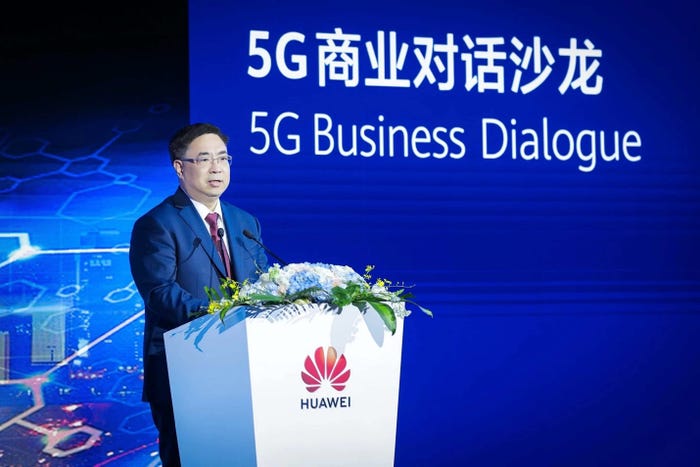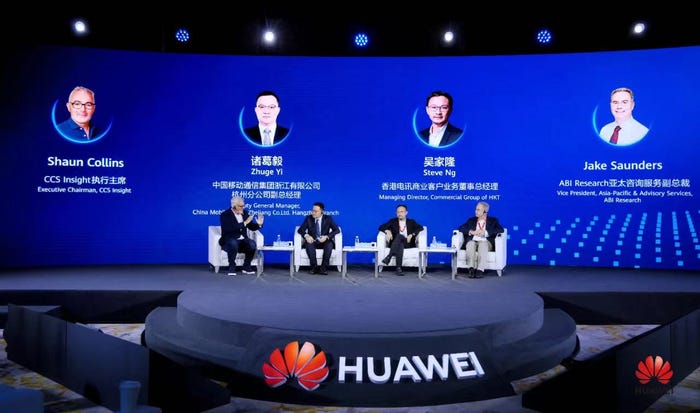Speakers at MWC Event Upbeat about 5G AdoptionSpeakers at MWC Event Upbeat about 5G Adoption
July 7, 2023

Sponsored Content
Speakers at a “5G Business Dialogue,” at the Mobile World Congress (MWC) Shanghai 2023, delivered a progress report on 5G adoption and discussed future opportunities. Four years into its commercial availability, 5G is delivering positive results that telecom operators can build on for future innovations, speakers said.
Telcos in China and across Asia are leveraging rapid construction and user migration to scale and monetize eMBB services. Innovations such as 5G New Calling and Naked-eye 3D have been gaining traction, said Richard Liu, president of Global Carrier Marketing and Solution Sales at Huawei. 5G revenue already accounts for 10% of the total among China’s three operators, he said.

“When we review the past four years’ history, you can see that 5G has no doubt already brought a big change and already brought amazing commercial results,” Richard Liu said. For instance, users of China Mobile 5G services have experienced speed increases of up to five times compared to 4G.
Richard Liu attributed the positive results to two key drivers – fast migration and industrial digitalization. “So far, 5G user penetration of China already increased from 18% to 36% in the past two years.”
Helping to boost those numbers are services such as Naked-eye 3D, which combines 3D digital LED displays with traditional, and New Calling, which China Mobile soft-launched over the past year.
B2Xsolutions, mMTC and passive IoT are also having an impact, Richard Liu said. In the area of B2X, a Beijing company, has developed 200 driverless vehicles for logistics and distribution. In Guangdong, China Unicom has released a dedicated 5G live show bundle, which provides users with uplink speed guarantees. In one year, China Unicom signed up 200,000 live show bundle users.
In Hong Kong, Richard Liu said, Hutchinson Hong Kong introduced a stock bundle for investors. “This bundle can provide the user double network resources to guarantee their experience when they do the business exchange and stock exchange.”
Preparing for Asian Games
The 5G Business Dialogue was an opportunity to, among other things, illustrate the diversity of services 5G delivers. In the sports realm, China Mobile is bringing an innovation to the Asian Games, to be hosted in the city of Hangzhou this year.
In Partnership with Huawei, China Mobile is deploying “the world’s first flexible, self-breathing network” for Asian Games venues. The network’s capacity can expand 1 to 2.4 times as needed to eliminate blind spots and deliver a high-quality experience during events such as the opening and closing ceremonies, said Wang Wensheng, General Manager of China MobileHangzhou.
Hangzhou, Wang Wensheng said, has been at the forefront of 5G innovation. “In terms of network leadership, we build ubiquitous 5G gigabit networks. At present, we have taken the lead in achieving continuous 5G coverage in townships as well as 100% coverage of important parks, hotspots, and administrative villages,” he said.

Pan-Asian Adoption
Outside of China, 5G adoption is also growing in places such as Indonesia and the Philippines. During a panel discussion, participants talked about challenges and opportunities.
Darius Delgado, head of the consumer mobile business for Globe Telecom in the Philippines, said 5G brings exciting possibilities that will revolutionize the telecom business, just as 4G did previously.
The number of 5G devices in the Globe network have tripled since 2021, he said. “One third or one fourth of the customers come from 5G already. So it’s great growth, even though we have invested slowly in it while balancing or trading off investments in 4G.” Darius Delgado said he expects growth to accelerate “in the near future” by multiple of at least five.
Globe’s investments are strategic, taking into consideration what customers need. “We are not about launching features and solutions to the point that the customers don’t really understand what we are talking about. We’re about solving problems of the nation. We’re about understanding where they’re coming from and giving them the experience to actually uplift their livelihood.”

Another panelist, Steve Ng, managing director of the commercial group at Hong Kong Telecom, talked about the role of 5G in the city’s digital transformation. For instance, 5G network capability is enabling the delivery of SD-WAN services to Hong Kong enterprises, he said. 5G complements fiber connectivity with fast deployment at some of the locations and backup service for fiber in others.
One example involves healthcare. Surgeons in operating rooms are leveraging 5G and 4K video to connect remotely with senior medical doctors for guidance when needed. This helps alleviate a shortage of doctors in a city grappling with how to care for its older residents, he said.
The technology also has an educational component. Using the same video feed, students in a university auditorium can follow the proceedings in the operating room, Steve said. “Now we are changing the world as how we can actually use technology to deliver healthcare service.”
Up Next: 5.5G
Huawei’s Richard Liu concluded his opening remarks with a short glimpse of the future. “5.5G is coming. 5.5G is the natural evolution of 5G. It’s a new journey to find new scenarios, to use new technology. So let’s work together, fulfill the vision, fulfill the self-confidence, and move 5G from good to great.”
About the Author
You May Also Like










.png?width=300&auto=webp&quality=80&disable=upscale)


_1.jpg?width=300&auto=webp&quality=80&disable=upscale)